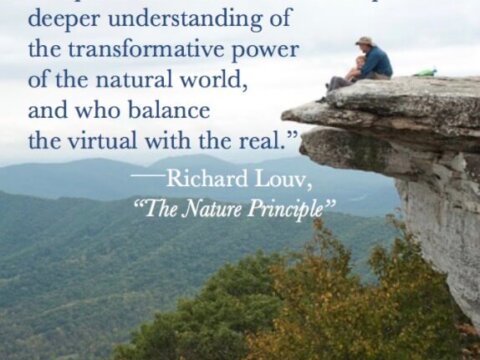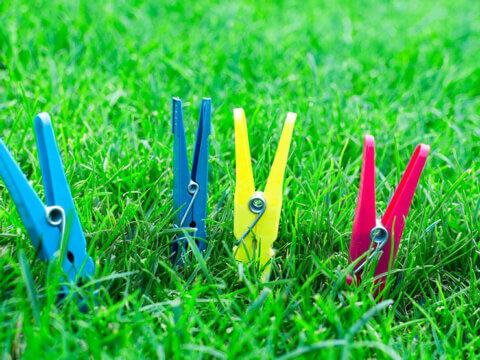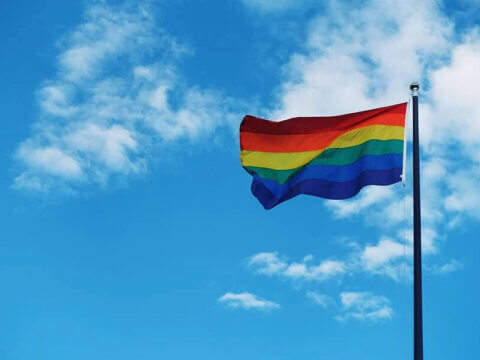Nature Nearby, A Path To Resilience
re·sil·ience: noun, the capacity to recover quickly from difficulties; toughness.
Resilience is now firmly woven into our everyday vernacular, in the contexts of climate change and Covid19. Nature’s role— particularly urban nature— in confronting both challenges has never been clearer. Coming out of Covid19 psychologically and physically resilient, individually and societally, will depend in large measure on access to nearby nature.

My apartment is in one of the city’s densest neighborhoods. From my living room window, cherry blossoms had just burst out. As I admire the profusion of pink a rapid, zig-zagging movement catches my eye; a female Anna’s hummingbird alit on a nearby branch, not twenty feet away, her pollen-specked bill titled skyward; was she looking for a predator or her feisty territory-obsessed mate? The pink blossoms and emerald-green avian buzz-bomb, calms me, energizes me. This small dose of nature, even from the confines of my small apartment lifts my spirits.
 Traffic, having largely disappeared from many neighborhood streets, has also altered the urban soundscape. Many friends and colleagues, most of who are not “birders” have commented, “I can’t believe all the birds singing!” Standing next to our pollinator-friendly rain garden a song sparrow perched next to our “backyard habitat” sign. He’s become my Covid19 buddy. In the early morning, standing much too close for proper “social distancing,” he belts out his song. I imitate him. We go back and forth in a duet. I’m sure he’s looking me in the eye, fluttering both wings as young birds do when begging their parents for food. Our pas de deux continues for several minutes after which I walk off feeling privileged to have connected with another being, once again with lifted spirits. I’ll often glance down from my window to observe a mother with her kids pointing at the song sparrow who happily sings for anyone willing to take notice of him at the rain garden’s edge.
Traffic, having largely disappeared from many neighborhood streets, has also altered the urban soundscape. Many friends and colleagues, most of who are not “birders” have commented, “I can’t believe all the birds singing!” Standing next to our pollinator-friendly rain garden a song sparrow perched next to our “backyard habitat” sign. He’s become my Covid19 buddy. In the early morning, standing much too close for proper “social distancing,” he belts out his song. I imitate him. We go back and forth in a duet. I’m sure he’s looking me in the eye, fluttering both wings as young birds do when begging their parents for food. Our pas de deux continues for several minutes after which I walk off feeling privileged to have connected with another being, once again with lifted spirits. I’ll often glance down from my window to observe a mother with her kids pointing at the song sparrow who happily sings for anyone willing to take notice of him at the rain garden’s edge.

Even nature-oriented public art lifts spirits. On my recent walk along the Willamette River Greenway, I stopped at a scrappy piece of wetland. Nearby, a bronze beaver sculpture sits near an interpretive sign. Even though inanimate, it has proven impossible for people to pass without a pat on its head which now sports a golden patina owing to the thousands of affectionate caresses. Passersby often decorate it with seasonal accessories. Someone was even moved to protect the beaver with its own N95 face mask.

Medical research abounds regarding the nexus between human health and access to nature. Health providers are now frequently writing prescriptions for their patients to get a dose of nature, to get outdoors for exercise and exposure to greenspaces. Tim Beatley, founder of Biophilic Cities poses a provocative question: “What’s the minimum daily requirement of nature?” He uses the food pyramid as a metaphor. The apex of the food pyramid such as meat and dairy products are problematic if they comprise a bulk of our diet. Fruits, grains, and vegetables, on the other hand, the bottom of the food pyramid, should constitute most of our daily diet. Taking the Nature Pyramid analogy 5,000-acre Forest Park, the equivalent of a big ribeye steak, is only a ten-minute walk away. Yet, it’s not suitable to visit in the time of Covid19, given the narrow trails which do not allow for social distancing. Instead, it’s my rain garden and the smaller nearby parks where I get my daily doses of nature, the bottom of the Nature Pyramid*.

Improving human resilience, and by extension the city’s resilience, to pandemics and climate change, it’s imperative that investment be increased for the protection of both large and small urban greenspaces. Where neighborhoods are greenspace deficient they should be created. Physical and mental resilience requires the entire Nature Pyramid, the large ecologically rich nature parks that we visit occasionally as well as the small greenspaces right outside our window, just outside our door —the rain gardens, ecoroofs, bioswales, urban forest, and neighborhood parks we visit daily.
*The Nature Pyramid was originally proposed by Tanya Denckla-Cobb, Director, Institute for Engagement + Negotiation and Lecturer at University of Virginia School of Architecture.
Mike Houck served as the Audubon Society of Portland’s Urban Naturalist for thirty-six years. In 1999 he founded the Urban Greenspaces Institute where he now serves as The Urban Naturalist. He sits on the board of directors for The Nature of Cities which he co-founded with David Maddox and on the board for The Intertwine Alliance.
-
Voices
CAMPING WHILE PARENTING: A Mother-Son Adventure
-
Feature
A common thread: Indigenous-led foundation weaves together activism and art, climate and community
-
Network News
Community Spotlight: Prescribe Outside
-
Voices
That’s nice, mija: Finding common language in nature connections
-
Richard Louv
"HUMMINGBIRD PARENTS": Seven Actions Parents Can Take To Reduce Risk And Still Get Their Kids Outside




